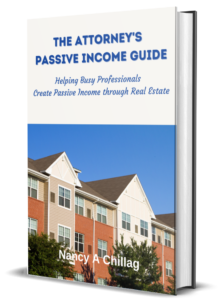As real estate investors, we’re constantly riding the waves of market dynamics, and one of the most significant factors influencing our decisions is the movement of interest rates. Over the past 12 months, we’ve seen a rollercoaster ride in interest rates that has sent ripples through the real estate market, impacting everything from mortgage rates to property values. Let’s delve into what has happened and how it affects real estate investing.
The Rollercoaster Ride of Interest Rates
The past year has been a whirlwind for interest rates. At the onset, the Federal Reserve took aggressive measures to combat the economic fallout from the pandemic, slashing rates to historic lows. This move aimed to stimulate borrowing and spending, providing much-needed liquidity to the market. As a result, mortgage rates plummeted, reaching enticing levels for both homeowners and investors alike.
However, as the economy showed signs of recovery and inflation concerns mounted, the Fed began hinting at tightening monetary policy. Speculation grew around the timing of rate hikes, causing fluctuations in the bond market. Consequently, long-term interest rates, including mortgage rates, experienced upward pressure, albeit with intermittent dips and plateaus along the way.
Implications for Real Estate Investors
For real estate investors, fluctuations in interest rates have far-reaching implications:
- Cost of Capital: Interest rates directly impact the cost of borrowing, which is a crucial consideration for investors leveraging their acquisitions. When rates are low, borrowing costs decrease, enhancing cash flow and overall returns. Conversely, rising rates can erode profitability unless offset by corresponding increases in rental income or property appreciation.
- Property Valuations: Low interest rates typically fuel demand for real estate assets, as investors seek higher yields in a low-yield environment. This heightened demand often translates into upward pressure on property valuations. Conversely, rising rates can dampen investor appetite, leading to softer valuations and potentially attractive buying opportunities for savvy investors.
- Market Sentiment: Interest rate movements can significantly influence market sentiment and investor confidence. Sharp increases in rates may trigger concerns about affordability and economic stability, leading to cautious behavior among investors. Conversely, declining rates can instill optimism and fuel demand for real estate assets.
- Exit Strategies: Interest rate trends also shape exit strategies for real estate investments. Investors may need to adjust their timing and approach based on prevailing rate conditions. For instance, in a rising rate environment, it might be prudent to expedite exits if an investment has a variable rate to avoid future increases. For investments with a low fixed rate loan, the prudent approach would be to hold on to the property until values come back. Remember, you need to sell to someone who will be looking for a loan at today’s higher interest rates and, thus, will not be able to pay as much for the property.
Navigating the Terrain
Given the dynamic nature of interest rates, successful real estate investing requires a proactive and adaptive approach:
- Stay Informed: Monitor economic indicators and central bank policies to anticipate potential interest rate movements. Stay abreast of market sentiment and adjust strategies accordingly.
- Risk Mitigation: Maintain conservative underwriting standards and factor in interest rate sensitivity in investment analyses. Consider implementing interest rate hedges or exploring fixed-rate financing options to mitigate exposure to rising rates.
- Diversification: Diversify across asset classes, geographies, and investment strategies to spread risk and capitalize on varying market conditions. A diversified portfolio can help cushion the impact of interest rate fluctuations.
- Long-Term Perspective: While interest rates play a crucial role in short-term decision-making, adopt a long-term perspective when evaluating real estate investments. Focus on fundamental factors such as location, demand drivers, and income potential to build resilient portfolios.
Conclusion
The past year has been a testament to the volatility of interest rates and their profound impact on real estate investing. By staying informed, mitigating risks, and maintaining a long-term perspective, investors can navigate the terrain effectively and capitalize on opportunities amidst shifting market dynamics. As we continue to monitor interest rate movements, let’s adapt our strategies and position ourselves for success in the ever-evolving real estate landscape.


